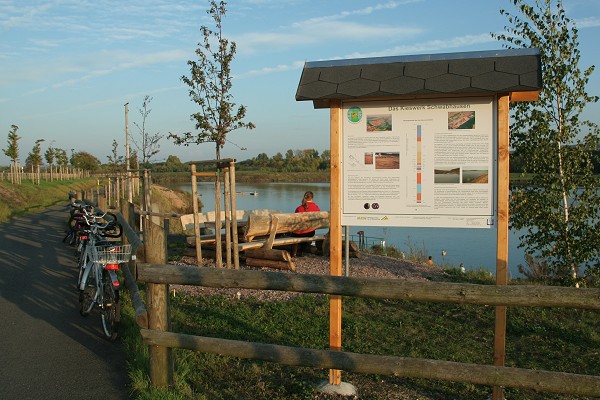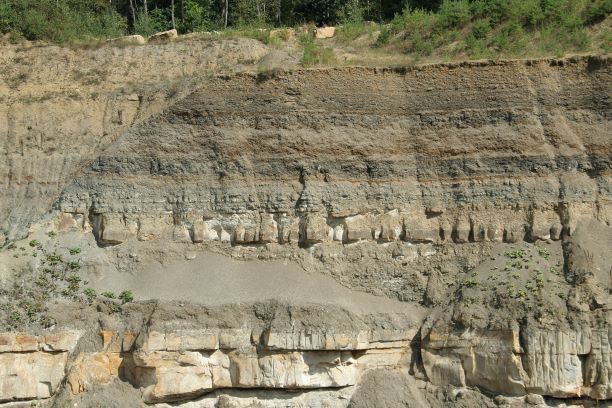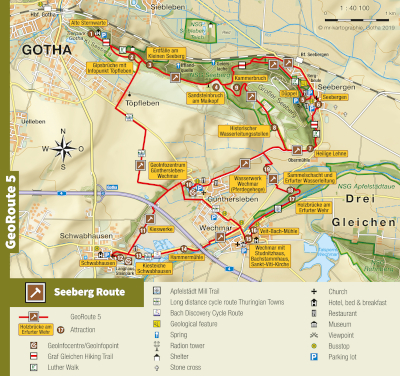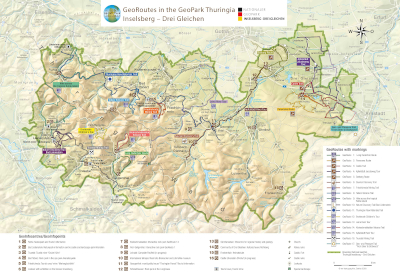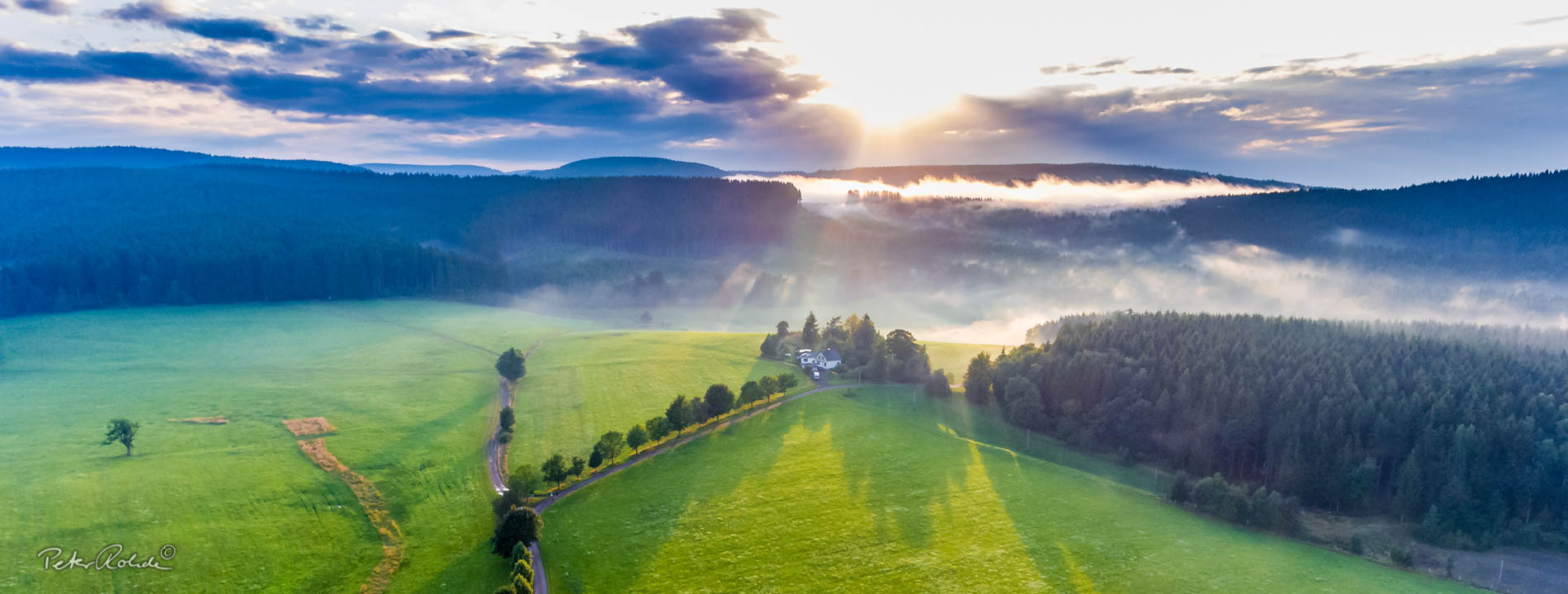
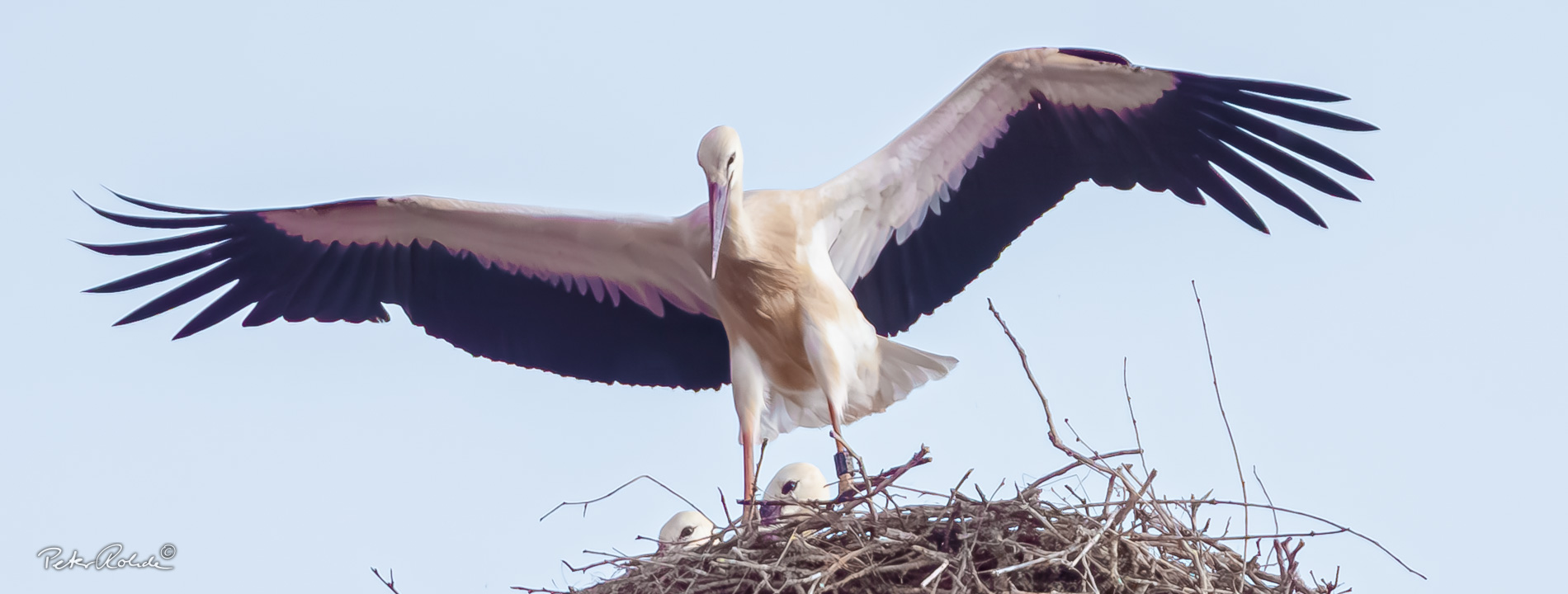
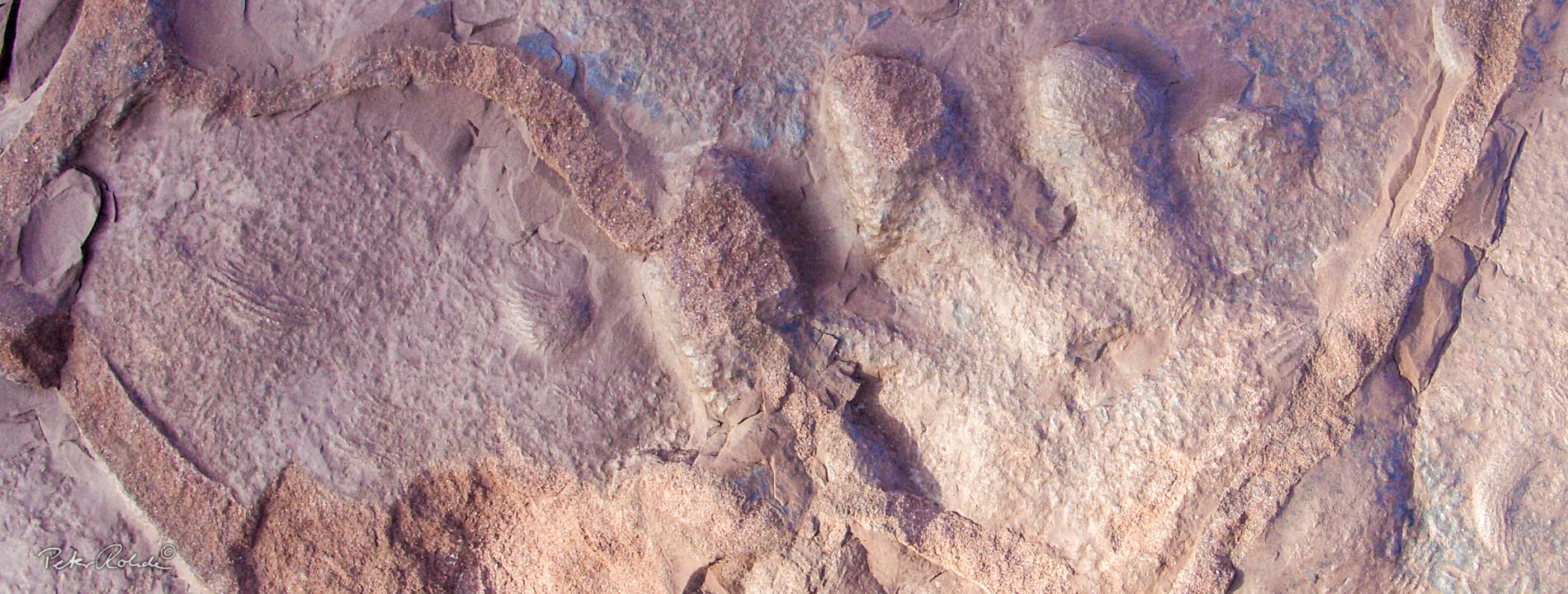
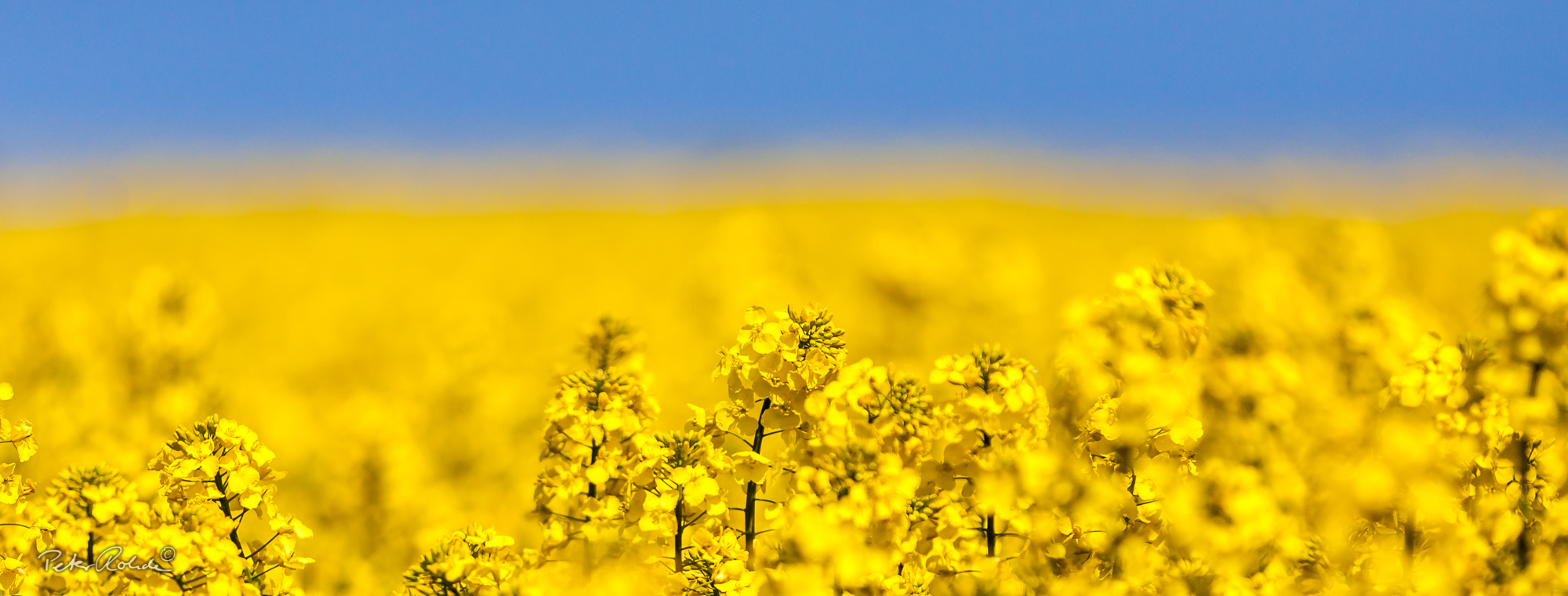
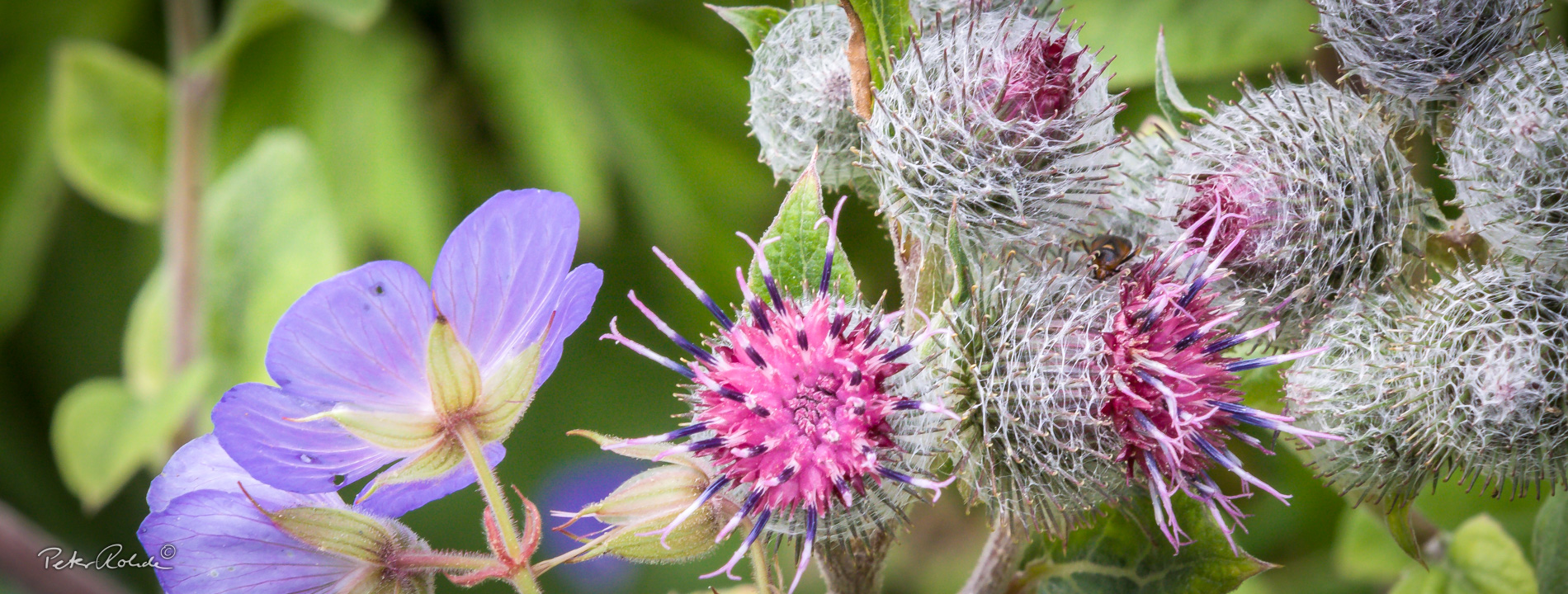
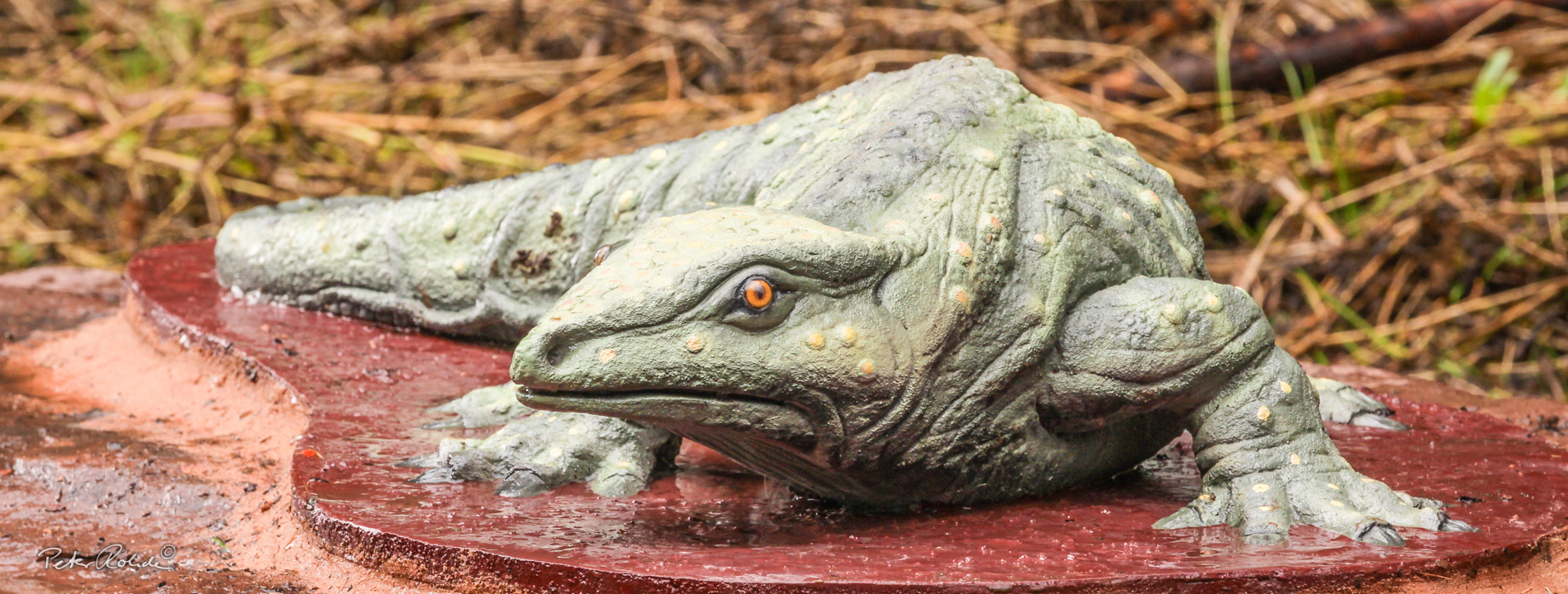
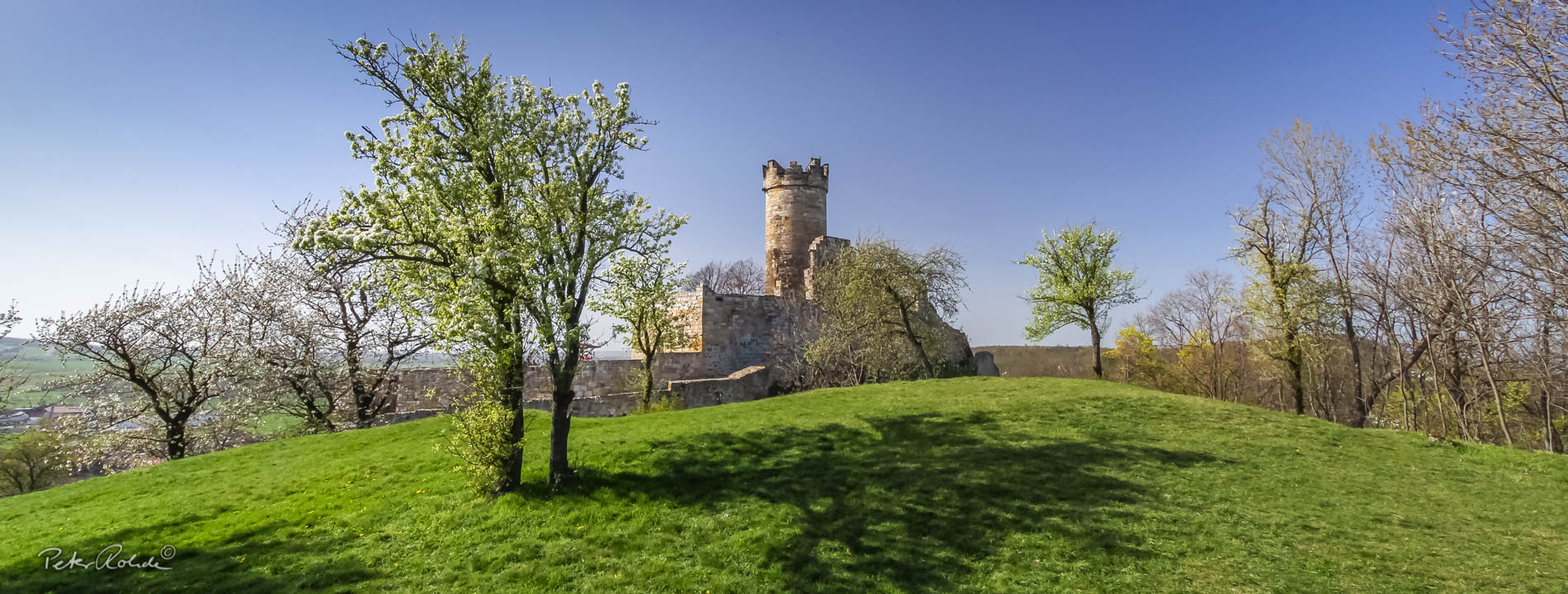
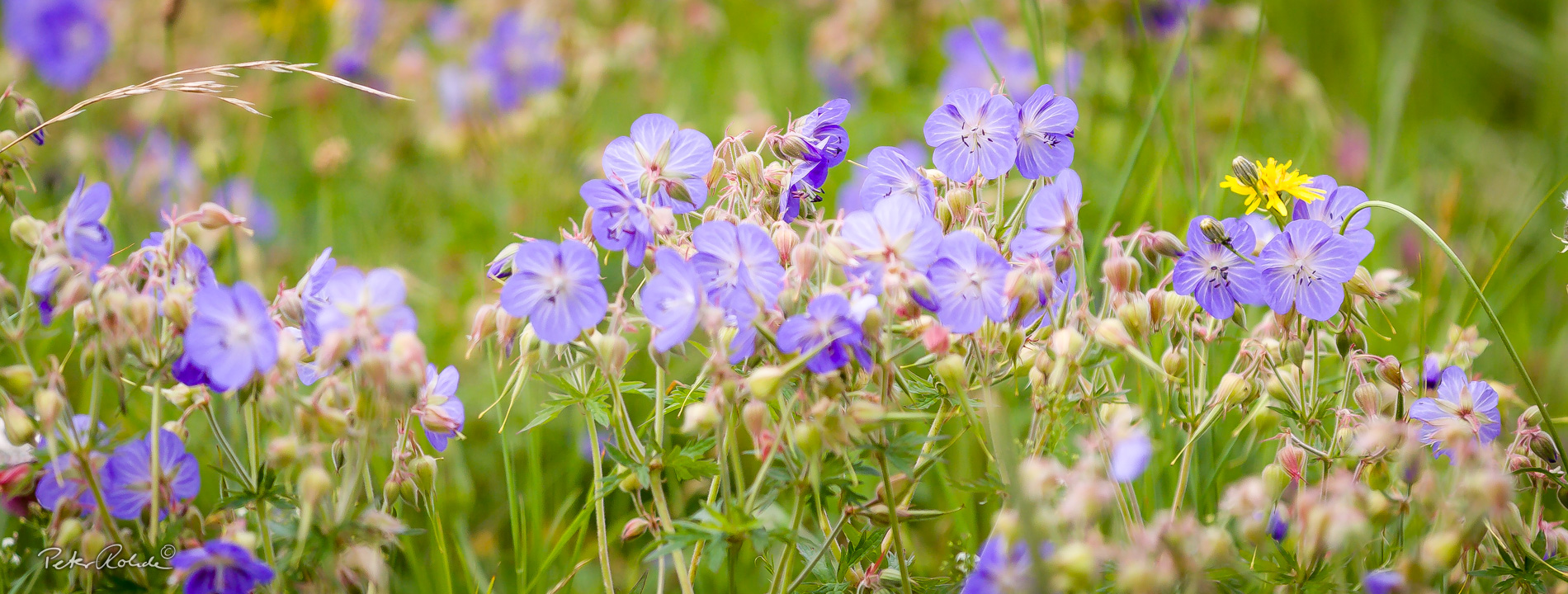
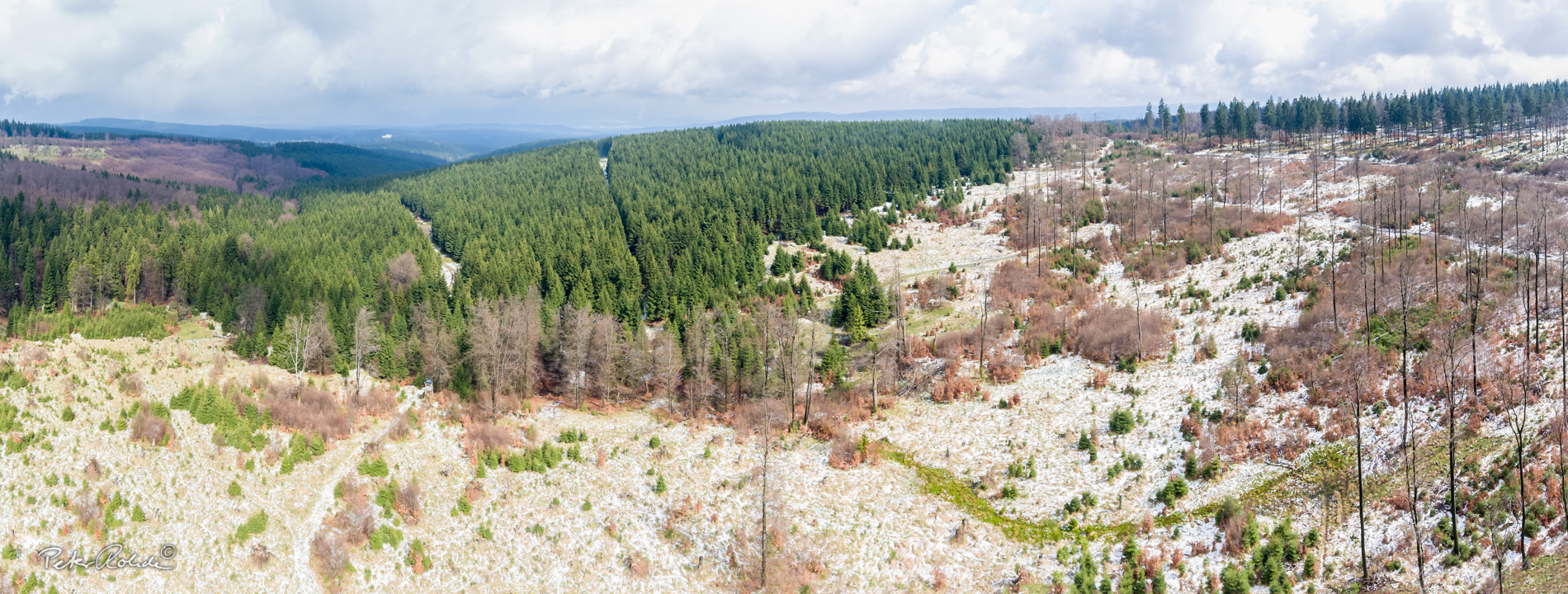









Seeberg Route
GeoRoute 5
This GeoRoute begins at the Old Observatory (Alte Sternwarte) on the Kleiner Seeberg near the south-eastern outskirts of Gotha. The route passes over the Grosser Seeberg hill (nature reserve), which is famous for the very special 220 million year old sandstone that is found here. The Seeberg Sandstein has been used in many important buildings such as Erfurt Cathedral. At the Düppel (lookout and traditional country inn on the Seeberg) one can see the reddish-grey, sparsely vegetated Badlands, which are also found on the south slope of all three castle hills. The Seeberg Route not only takes you past geological and archaeological sites but also historically important places such as the Bach family residence in Wechmar. As the trail continues it passes a former water castle (today an Infocentre for Regional History and Geology) in Günthersleben, old mills and historic water channels. The Seeberg Route shares some sections with the Luther Route, the Graf-Gleichen-Trail and the Nature Trail Apfelstädt-Mühlen.
- Distance / Category: approx. 32 km, Circular trail (north circuit approx. 20 km, south circuit approx. 12 km)
- Elevation: approx. 280 – 370 m above sea-level
- Difficulty: easy – moderate
- Trail characteristics: sandy gravel road, some sections on tarmac
- Villages along the route: Gotha/Töpfleben, Seebergen, Günthersleben, Wechmar, Schwabhausen
- Geological stations: Gypsum quarries (Kleiner Seeberg), sandstone quarries at the Maikopf and the Kammerbruch (geotope), where Seeberg sandstone is still extracted today, Badlands at the country inn Düppel (lookout) and the Bergbeule
- Touristic stations: Gotha: Old Observatory on the Kleiner Seeberg (end of 18th century), was once the most modern and important in Europe, today a restaurant, Günthersleben: GeoInfopoint in the former water castle (built mid 12th century) with a permanent exhibition about regional history and geology, Wechmar: Bach family residence, Veit-Bach-Obermühle (mill), Sankt Viti church (largest village church in Thuringia), manor house Studnitz (built around 1700) with a Rococo hall and several exhibitions, Schwabhausen: GeoInfopoint at the reconstructed longhouse from the Linear Pottery Period with rock park
- Information: Tourist Information and GeoInfocentre “Kulturscheune“
Text: Bettina Aschenbrenner (PhD), Tourismusverband Thüringer Wald Gothaer Land e.V.
